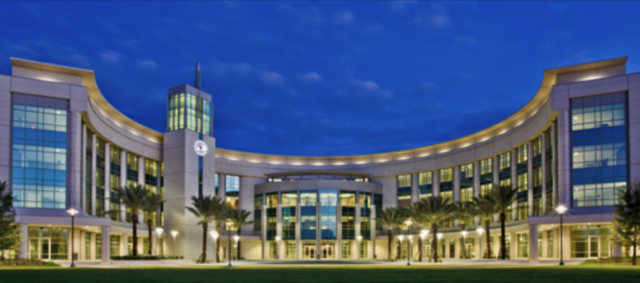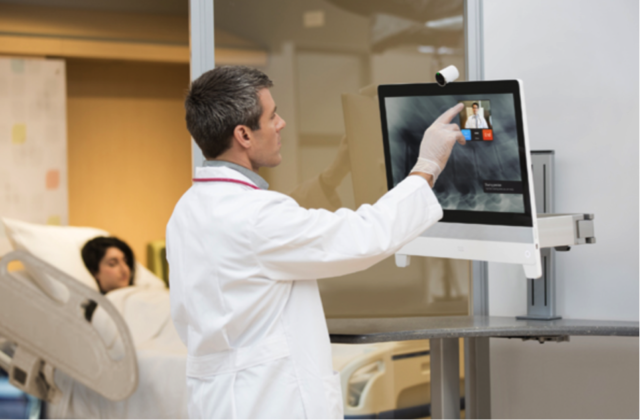
How Can Smart Cities Improve the Health and Wellness of Citizens?
April 11, 2019 — Highlight, The Big Picture
Smart Cities Solutions offer innovative means to proactively address health and wellness. It lends relief to an already strained healthcare system, one which faces ever-increasing demands and quality expectations in light of continued urbanization, industrialization, an aging population, climate change, and growing healthcare costs.
Design with the future in mind
It’s often been said that the US has a sick care system rather than a healthcare system because the focus has been on treating the illness rather than root causes. To move towards a genuine health care system, we need to better share knowledge on healthy lifestyle habits. Technology can play an important role in this effort. It can be used to simplify tracking and to share information on areas such as nutrition, sleep, exercise, mental health, and stress management in real time.
Looking beyond increasing awareness, it’s important to prioritize health and wellness goals in early planning and architecture phases. We must proactively design with these areas in mind. For instance, at Cisco, Health and Wellness has been a key pillar of our Smart Cities strategy since we began our journey 10 years ago. We asked ourselves, “If you had unlimited storage and bandwidth at a reasonable price, would you run healthcare in a city in the same way?” Here are a few ways Cisco is putting this approach into action.
Proactive design – Lake Nona Medical City
As the name implies, health and wellness are integral parts of Lake Nona’s upfront design. They are committed to building an innovative and connected community that’s focused on healthy living and sustainable design. The 650-acre master-designed community is home to thoughtfully designed neighborhoods, education facilities, recreational centers, and some of the nation’s leading hospitals, academic, research institutions. Cisco and Tavistock Group worked on the Lake Nona Medical City project in Orlando to implement a unified lifelong wellness and medical care model between the numerous medical care and life sciences stakeholders within the Lake Nona Medical City.

Their collection of world-class medical facilities makes Lake Nona a living lab for medical innovation. To better understand the interaction and effects of the built environment and lifestyle behaviors on human wellbeing, the Lake Nona Institute is researching and analyzing information on human, physical, and environmental elements in real-time.
Lake Nona is also noteworthy for being home to WHIT. The Wellness Home built on Innovation and Technology is the first-of-its-kind and is designed to activate health solutions and technologies that focus on air quality, healthy eating, water quality, meditation, and sleep enhancing lighting. All of this is available within a vibrant residential community.
Expanding access to Healthcare
Demands for healthcare services are increasing in both urban and rural environments, and these demands are being driven by aging populations, growing life spans, and changing health services. The increasing adoption of telemedicine allows on-demand specialist resources to expand the scope of their care to underserved populations and communities.
Rural access – Bairnsdale Hospital
In a rural setting, the major challenge is often the lack of access to specialist care due to the scarcity of resources. Bairnsdale Hospital, which services a small regional community in southeast Victoria (Australia), has improved the quality of its care by implementing a comprehensive Cisco telehealth environment within their facility.
Urban access – NYC Correctional Health Service
For how telehealth can support an urban setting, you don’t need to look any further than New York City and the Correctional Health Service (CHS). The CHS is the largest municipal health system in the United States, managing the delivery of healthcare for the city’s 12 jails. It is accountable for providing quality care to approximately 55,000 people moving through the city’s correctional system each year. The CHS needed a solution to improve access to care and reduce reliance on transportation, so they deployed a telemedicine and comprehensive Cisco collaboration solution to improve quality of care, connect facilities with more care providers, and provide a better patient experience.

Health and wellness are core components of a citizen’s quality of life. When applied mindfully, technology enhances both qualities. Lake Nona, NYC Correctional Services, and Bairnsdale Hospital provide a few examples of how this works in practice and show how foresight and planning can help ensure technology works to benefit the end-user. I believe incorporating health and wellness goals in the early stages of Smart City design, rather than as an afterthought, will further unlock our ability to shift healthcare from reactive solutions to more proactive ones, which will support expanded access to care.